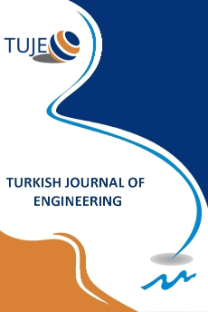Comparative analysis of an anchored retaining wall system in a deep foundation excavation: A case study of Sivas Cultural Center Building in Türkiye
Comparative analysis of an anchored retaining wall system in a deep foundation excavation: A case study of Sivas Cultural Center Building in Türkiye
Modeling the surface element and support system in deep excavation pits and investigating the deformation mechanism is an important issue. In this study, alternative solution methods for an anchored bored pile model are compared and discussed, and it is aimed to contribute to the studies to be carried out in the deep excavation area. A numerical analysis of retaining wall design is examined in the case of the Sivas cultural center building's deep excavation using Plaxis 2D and GGU-Retain software. Measured field data and simulated results are discussed. As a result, the bending moment and lateral deformation reach a maximum when the foundation pit is excavated to the bottom. It can be said that the lateral deformation value found with Plaxis 2D is within the allowable limits, closer to the field data, and provides sufficient quality. The research results will provide theoretical and practical knowledge for designing and constructing similar deep excavation pits for the optimal strategy.
Keywords:
Anchored pile, Retaining wall, Deep excavation, Lateral deformation Plaxis 2D, GGU-Retain,
___
- Terzaghi, K., Peck, R. B., and Mesri, G. (1967). Soil Mechanics in Engineering Practice, John Wiley and Sons, Inc., New York, NY, USA.
- PLAXIS. 2D (2006). Plaxis user manual (version 8.6). Delft University of Technology & Plaxis BV, the Netherlands.
- GGU-Retain (2020). Manual version 13. Civilserve Gmbh, Steinfeld, Germany.
- Maleki, J., Pak, A., Yousefi, M., & Aghakhani, N. (2022). A comprehensive FE study for design of anchored wall systems for deep excavations. Tunnelling and Underground Space Technology, 122, 104340.
- Plaxis 2D (2015). plaxis user manual, delft university of technology & plaxis bv, the Netherlands.
- Dmochowski, G., & Szolomicki, J. (2021). Technical and Structural Problems Related to the Interaction between a Deep Excavation and Adjacent Existing Buildings. Applied Sciences, 11(2), 481.
- Wang, S., Li, Q., Dong, J., Wang, J., & Wang, M. (2021). Comparative investigation on deformation monitoring and numerical simulation of the deepest excavation in Beijing. Bulletin of Engineering Geology and the Environment, 80(2), 1233-1247.
- Chen, A., Wang, Q., Chen, Z., Chen, J., Chen, Z., & Yang, J. (2021). Investigating pile anchor support system for deep foundation pit in a congested area of Changchun. Bulletin of Engineering Geology and the Environment, 80(2), 1125-1136.
- Yang, Z., Li, S., Yu, Y., Liu, X., & Hu, Y. (2020). Study on the variation characteristics of the anchor cable prestress based on field monitoring in a foundation pit. Arabian Journal of Geosciences, 13(23), 1-10.
- Shen, Y. S., Yin, J., Zhu, D. S., Kumah, D., Guo, W. F., & Hudu, A. A. (2021). Performance of a deep foundation pit supported by suspended piles in soil and rock strata: a case study. Arabian Journal of Geosciences, 14(21), 1-13.
- Raddatz, D., & Taiba, O. (2017). Anchored piles in Santiago's gravel: modeling results for displacement curve. Revista de la Construcción. Journal of Construction, 16(3), 457-467.
- Oróstegui, P., Villalobos, F. (2010). Design And Construction of An Anchored Soldier Pile Wall For A Large Underground Car Park. Electronic Journal of Geotechnical Engineering, Vol. 19: 59-63.
- Bilgehan, R. P., Kiliç, R. (2008). The Landslides Threatening Taşova Town (Central Anatolia, Turkiye) And Their Environmental Impacts. Environmental Geology, 55(1), 179.
- Ruiz, E. F., Hemsi, P. S., & Vidal, D. M. (2013). Numerical Analysis of Reinforcement Strains at Failure for Reinforced Embankments over Soft Soils. Soils and Rocks, 36(3), 299-307.
- GGU-Slope (1999) Slope failure calculations with circular and polygon slip planes. Braunschweig, Germany.
- FHWA-IF-99-015 (1999). Geotechnical Engineering Circular No.4: Ground Anchors and Anchored Systems, U.S. Department of Transportation, Federal Highway Administration, Washington D.C.
- Clough GW, O'Rourke, T.D. (1990). Construction induced movements of in-situ walls. In: Design and Performance of Earth Retaining Structure, Proceedings of Specialty Conference, Geotechnical Special Publication No.25, ASCE, New York.
- Carder, D.R. (1995). Ground movements caused by different embedded retaining wall construction techniques, Transport. Res. Lab. Rep., 172, Berkshire, U.K.
- Long, M. (2001). Database for retaining wall and ground movements due to deep excavations. Journal of Geotechnical and Geoenvironmental Engineering, 127(3), 203-224.
- ISSN: 2587-1366
- Yayın Aralığı: Yılda 4 Sayı
- Başlangıç: 2017
- Yayıncı: Mersin Uüniversitesi
Sayıdaki Diğer Makaleler
Strengthening of solid beam with fiber reinforced polymers
Şemsettin KILINÇARSLAN, Yasemin ŞİMŞEK TÜRKER
Uranium migration and radioactive characteristics of the Sarıçiçek and Sarıhan Granodiorites
Olumuyiwa FALOWO, Abayomi Solomon DARAMOLA
Designing a device for measuring the velocity of liquid flowing in open channels
Mehmet Cemal ACAR, Abdullah KEKÜL
Buckling performance of thin-walled filled steel columns
Abdulkerim İLGÜN, Ahmad Javid ZIA, Sadrettin SANCIOĞLU, Hasan Furkan SOYDOĞAN, Münife Hanım KÖKLÜ, Semih ARIBAŞ, Berna BAYRAM
Vali NURULLAYEV, Usubaliyev Baybala TACİ, Gurbanov Gusein RAMAZAN, Abdullayeva Zeynab ARİF, Gasimzadeh Aysel VALİYADDİN, Hasanova Matanat MAXSUD
